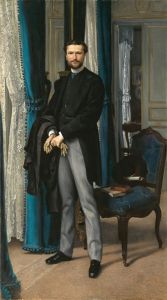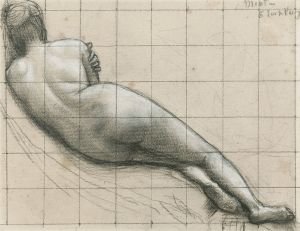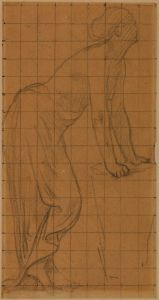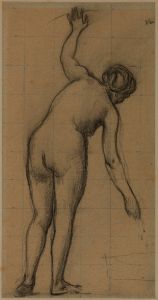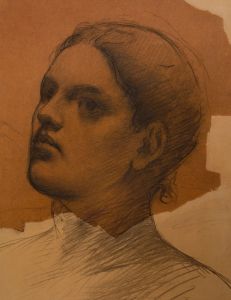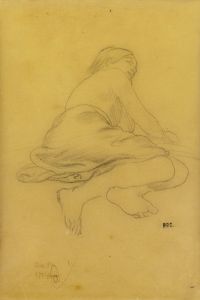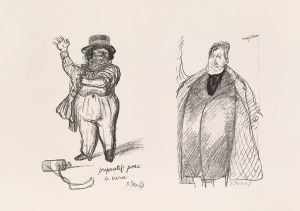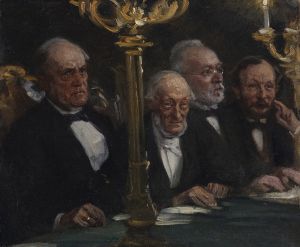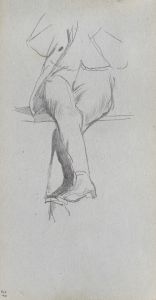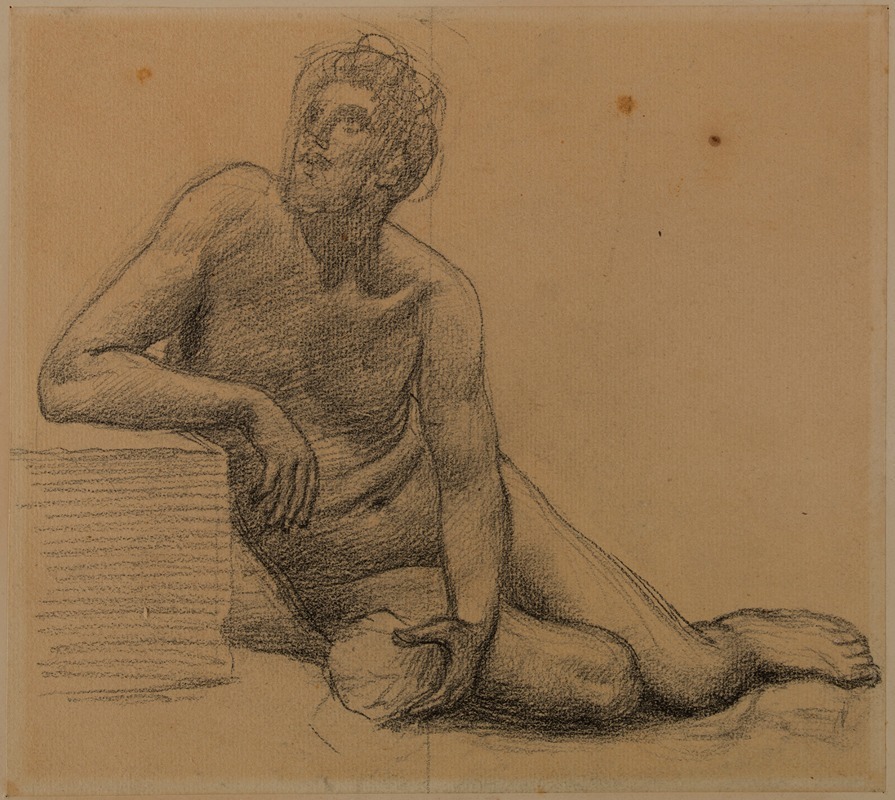
Homme nu assis par terre
A hand-painted replica of Pierre Puvis de Chavannes’s masterpiece Homme nu assis par terre, meticulously crafted by professional artists to capture the true essence of the original. Each piece is created with museum-quality canvas and rare mineral pigments, carefully painted by experienced artists with delicate brushstrokes and rich, layered colors to perfectly recreate the texture of the original artwork. Unlike machine-printed reproductions, this hand-painted version brings the painting to life, infused with the artist’s emotions and skill in every stroke. Whether for personal collection or home decoration, it instantly elevates the artistic atmosphere of any space.
Pierre Puvis de Chavannes, a prominent 19th-century French painter, is known for his contributions to Symbolism and his large-scale mural works. Among his lesser-known works is the drawing Homme nu assis par terre (translated as Nude Man Sitting on the Ground). This artwork is a study of the male form, showcasing Puvis de Chavannes' skill in anatomical observation and his interest in the human figure as a subject of artistic exploration.
The drawing depicts a nude male figure seated on the ground, with his body slightly turned and his posture relaxed. The figure's musculature and contours are rendered with precision, reflecting Puvis de Chavannes' academic training and his ability to capture the subtleties of human anatomy. The work is executed in a monochromatic medium, likely charcoal or pencil, which emphasizes the play of light and shadow on the figure's body. The simplicity of the composition directs the viewer's attention to the subject itself, devoid of any elaborate background or narrative context.
While Puvis de Chavannes is primarily celebrated for his murals and allegorical paintings, works like Homme nu assis par terre highlight his dedication to preparatory studies and his mastery of draftsmanship. Such studies were often integral to his creative process, serving as foundational exercises for larger compositions. However, it is unclear whether this particular drawing was created as part of a preparatory process for a specific painting or as an independent exploration of the human form.
The exact date of creation for Homme nu assis par terre is not documented, but it is consistent with the academic practices of the 19th century, when artists frequently produced life studies as part of their training and artistic development. The work reflects the influence of classical art traditions, which emphasized the study of the nude as a cornerstone of artistic education.
Currently, the drawing is housed in the collection of the Musée des Beaux-Arts de Lyon in Lyon, France. It is one of several works by Puvis de Chavannes preserved in the museum, which holds a significant collection of 19th-century French art. The piece provides valuable insight into the artist's process and his approach to the human figure, offering a glimpse into the foundational skills that underpinned his more famous large-scale works.
Beyond its artistic merit, Homme nu assis par terre serves as a testament to Puvis de Chavannes' versatility as an artist, demonstrating his ability to move seamlessly between monumental murals and intimate studies of the human form.





